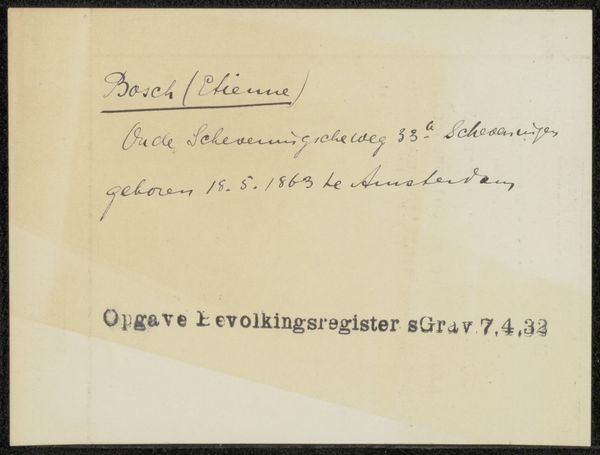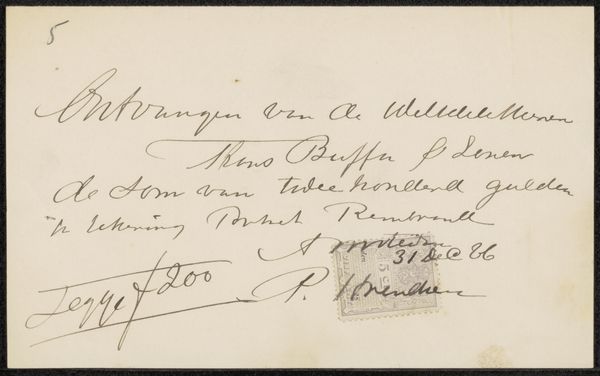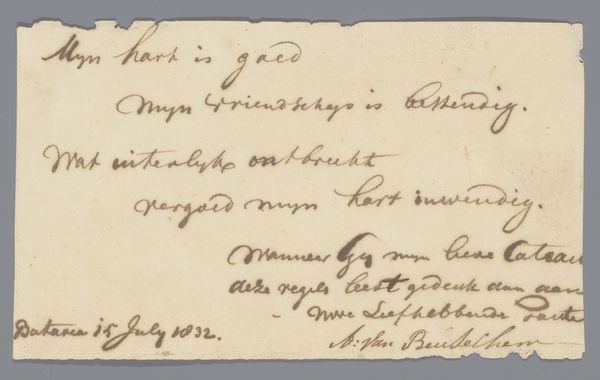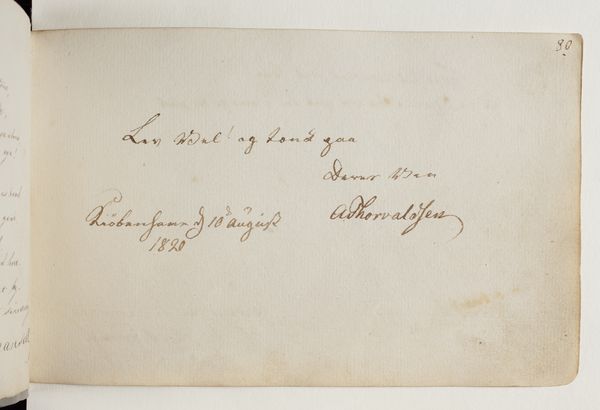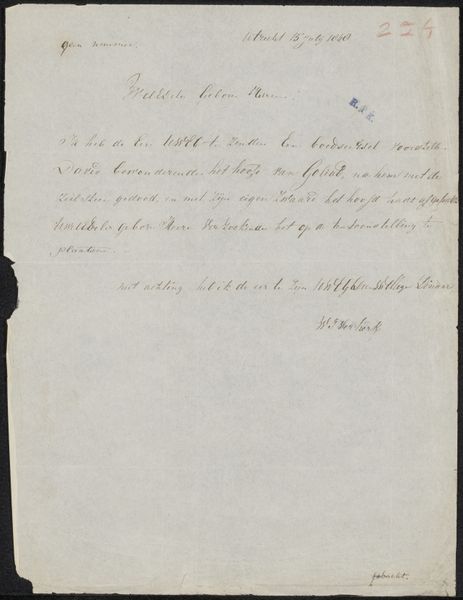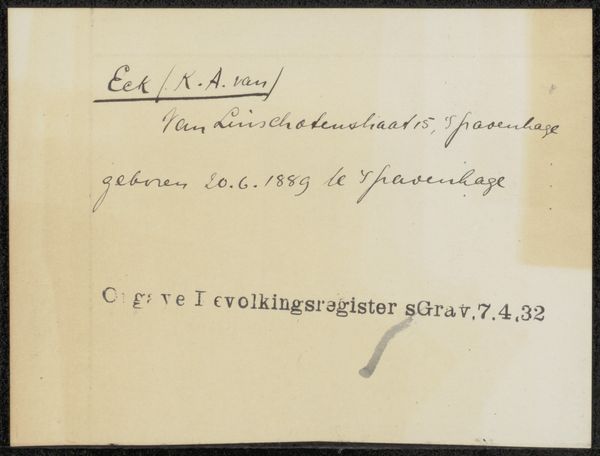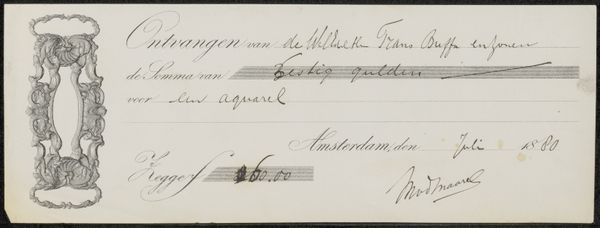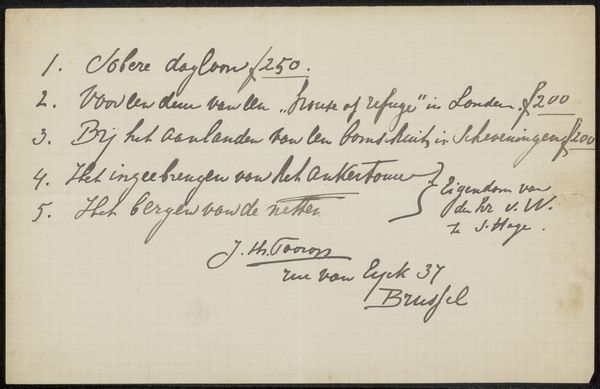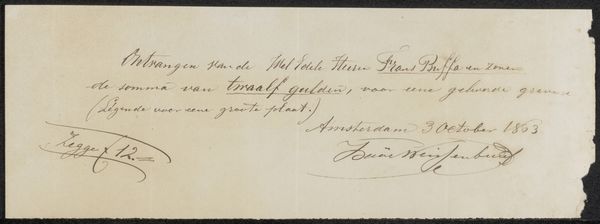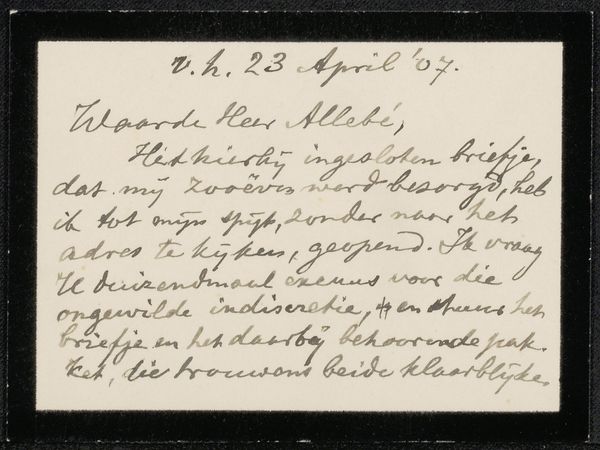
#
ink paper printed
#
old engraving style
#
hand drawn type
#
personal sketchbook
#
hand-drawn typeface
#
ink drawing experimentation
#
pen-ink sketch
#
ink colored
#
sketchbook drawing
#
sketchbook art
Copyright: Rijks Museum: Open Domain
Curator: This is a fascinating piece from the Rijksmuseum's collection: a newspaper clipping titled "Krantenknipsel uit archief Philip Zilcken." The work is attributed to an anonymous artist, and based on its materiality and the embedded ephemera, we can date it to between 1867 and 1930. It's rendered in ink on paper, incorporating printing. Editor: My initial impression is one of immediacy and informality. It's clearly a quickly rendered page, something not intended for public consumption. It feels very intimate, like a glimpse into someone's private thoughts. Curator: Indeed. The visible newsprint fragment referencing the Royal Society of Painter-Etchers positions this piece within a specific cultural milieu. There's a clear interest in etching as a medium, reflective of a broader artistic trend in late 19th century Europe. Etching was experiencing a popular revival at this time, valued for its unique effects and the intimate, almost domestic scale of its practice. Editor: I'm intrigued by the handwritten text alongside the printed clipping. It seems to almost annotate the news item, placing it within a personal context. What do you make of the contrast between the formal, typeset announcement and the casual script? Is it meant to challenge the "high art" of etching that it seems to advertise? Curator: It's possible. However, the contrast might instead emphasize the integration of public and private spheres. The printing would have held specific symbolic importance. Remember, it comes at a time of significant advancements in print media; this era marked an important transformation, not only for mass communication but also for artistic distribution and perception. This type of symbolic messaging helps us interpret cultural continuities over the years. Editor: The text almost has the effect of legitimizing and making personal this larger socio-artistic movement. Given the era, what function do you see sketches like these serving in documenting contemporary movements? Curator: They show art functioning less as individual statements, but as components of a wide web. What forgers or activists do now online is comparable in many ways to the visual culture developing across Europe back then. And in many ways, this anonymous "Krantenknipsel" helps reveal that process today. Editor: It does feel relevant. Perhaps these were a quick form of communication with an address indicating this clipping needed to reach somebody in Paris. So fascinating. Curator: Agreed. Looking at it closely definitely adds layers to our understanding.
Comments
No comments
Be the first to comment and join the conversation on the ultimate creative platform.

